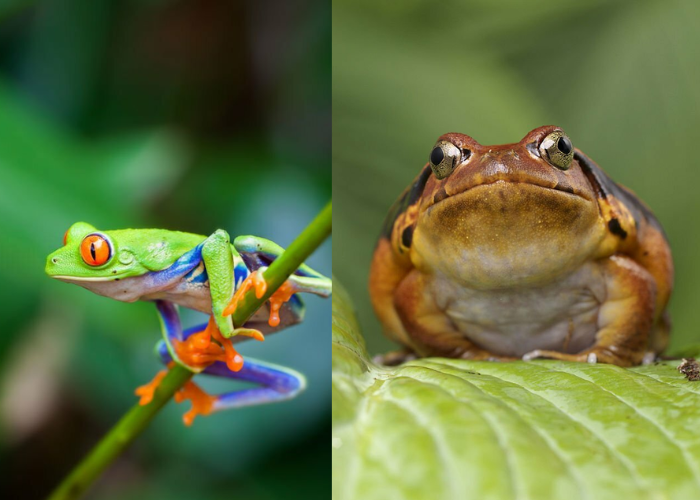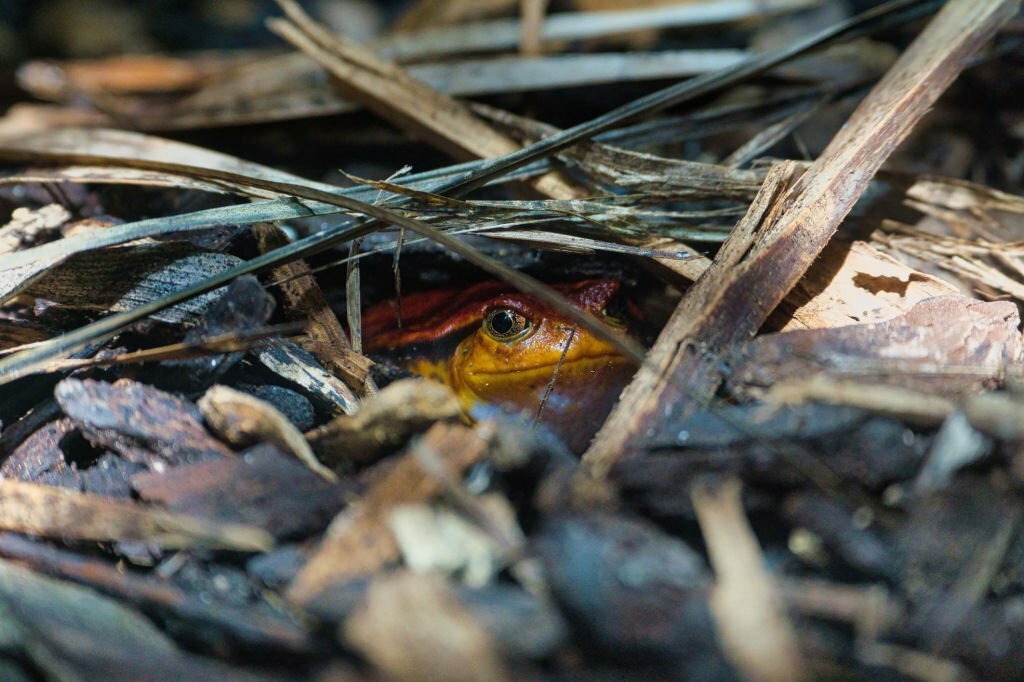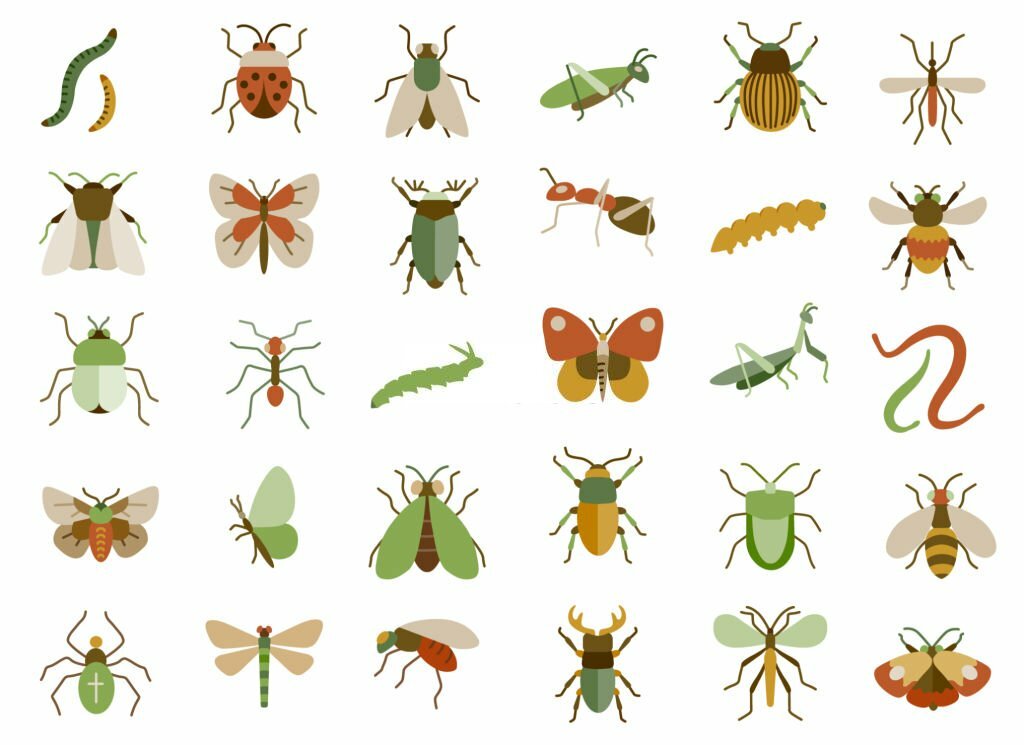Introduction to Tomato Frogs and Tree Frogs
Tomato frogs and tree frogs are both fascinating amphibians that are popular among frog enthusiasts. While they may belong to the same amphibian family, they have distinct characteristics that set them apart. In this article, we will explore the similarities and differences between tomato frogs and tree frogs, helping you understand more about these unique species and whether they can live together harmoniously. So let’s dive in and discover the wonderful world of tomato frogs and tree frogs.

Habitat and Environmental Needs
Tomato frogs and tree frogs have distinct habitat and environmental needs that should be understood before considering cohabitation. Understanding their specific requirements will help ensure their overall well-being and compatibility.
Tomato frogs are native to the tropical rainforests of Madagascar and thrive in warm and humid environments. They prefer temperatures ranging from 70°F to 80°F (21°C to 27°C) and humidity levels around 70%. Providing them with a suitable substrate, such as moist soil or moss, is essential for maintaining the appropriate humidity.
Tree frogs, on the other hand, come from various regions across the world and have differing habitat preferences depending on their species. Some tree frogs, like the Red-eyed Tree Frog, are found in tropical rainforests and have similar temperature and humidity requirements as tomato frogs. Others may come from drier environments or cooler climates, so it’s crucial to research the specific needs of the tree frog species you plan to pair with tomato frogs.

In terms of enclosure setup, tomato frogs appreciate a semi-aquatic environment, with a shallow water dish for soaking and burrowing opportunities. They also require good ventilation and hiding spaces, such as leafy plants or cork bark.
Tree frogs, on the other hand, typically prefer arboreal setups with vertical spaces to climb and ample foliage for privacy. Enclosures for tree frogs should include branches or vines for perching, as well as plants and suitable hiding spots.
When considering cohabitation, it’s important to create a habitat that fulfills the needs of both tomato frogs and tree frogs. Careful attention should be paid to the temperature, humidity, and overall enclosure design to ensure the comfort and well-being of both species.
It is crucial to research and understand the specific needs of each species, as well as their compatibility and temperament, before attempting to house tomato frogs and tree frogs together. In the next section, we will explore the compatibility aspect in more detail, including potential challenges and risks involved in cohabitation.
Compatibility of Tomato Frogs and Tree Frogs
Tomato frogs and tree frogs belong to different species and have unique habitat requirements, which raises the question of their compatibility for cohabitation. While it may seem tempting to house these frogs together, it is essential to consider various factors to ensure their well-being.
Differences in Habitat Needs
Tomato frogs are native to Madagascar and thrive in a warm and humid environment, typically found in rainforests. On the other hand, tree frogs are more adaptable and can inhabit various ecosystems such as tropical rainforests, temperate forests, or even arid regions. This difference in habitat preferences indicates that tomato frogs and tree frogs require distinct environmental conditions.

Varied Temperament and Behavior
Tomato frogs are generally more solitary and prefer to spend most of their time on the ground, while tree frogs are arboreal and enjoy climbing trees and vegetation. These differing behaviors may lead to territorial issues, stress, and aggression if they are forced to share the same space.
Dietary Requirements
Another significant difference lies in the dietary needs of tomato frogs and tree frogs. Tomato frogs are primarily insectivores, consuming a diet predominantly composed of small invertebrates like crickets and worms. In contrast, tree frogs have a more diverse diet, including insects, spiders, small vertebrates, and even fruits. Providing the appropriate and varied diet for both species may pose a challenge in a shared habitat.

Risk of Disease Transmission
Housing tomato frogs and tree frogs together increases the risk of disease transmission between the species. Each species may be susceptible to different pathogens or parasites, which can spread more easily in a shared enclosure, leading to health issues or even fatalities.
Considering these factors, it is generally recommended to house tomato frogs and tree frogs separately in their own dedicated enclosures. This allows for better control of their habitat, temperature, humidity, and diet requirements, reducing the risk of stress, aggression, and disease transmission. While cohabitation may seem appealing, it is crucial to prioritize individual well-being and ensure the proper care of each species.
Potential Challenges and Risks
Potential challenges and risks while the idea of housing tomato frogs and tree frogs together may sound appealing, there are several potential challenges and risks that need to be considered.
Size and Behavior Differences
One of the main challenges when keeping tomato frogs and tree frogs together is their differing sizes and behaviors. Tomato frogs are generally larger and have a more robust build compared to tree frogs. This size difference can lead to aggression or territorial disputes between the two species, especially when it comes to feeding or breeding.
Disease Transmission
Housing tomato frogs and tree frogs together also poses a potential risk of disease transmission. Different species may harbor different pathogens or parasites, which can easily be transmitted if they are kept together. This can lead to health issues, stress, and even mortality in both tomato frogs and tree frogs if proper quarantine measures and hygiene practices are not followed.
Stress and Competition
Mixing tomato frogs and tree frogs can also create stress and competition within the enclosure. Both species may compete for resources such as food, hiding spots, or basking areas, which can lead to increased stress levels and potential aggression. This can negatively impact the overall well-being and health of the frogs.

Considering these potential challenges and risks, it is crucial to carefully assess the compatibility and suitability of housing tomato frogs and tree frogs together. It is recommended to consult with experienced frog keepers or herpetologists before making a decision. Ultimately, ensuring the well-being, health, and safety of the frogs should be the top priority.
Alternative Options for Cohabitation
When considering alternative options for the cohabitation of tomato frogs and tree frogs, it is important to prioritize the safety and well-being of your amphibian pets. While some frog species can successfully live together, it is generally not recommended to house tomato frogs with tree frogs due to potential compatibility issues and differences in their habitat and environmental needs.
One alternative option is to create separate enclosures for the tomato frogs and tree frogs. This allows you to provide optimal conditions for each species without the risk of aggression or stress. You can design individual habitats with the specific requirements of tomato frogs and tree frogs in mind, including temperature, humidity, substrate, and vegetation preferences.
Ultimately, the decision on whether to cohabitate tomato frogs with tree frogs should be based on careful consideration of their compatibility, habitat requirements, and the potential risks involved. Prioritizing the welfare of your frogs is crucial to ensure their health and happiness in their living environment.
Conclusion: Making the Right Decision for Your Frogs
In conclusion, when it comes to housing tomato frogs and tree frogs together, it is important to prioritize the individual well-being and specific requirements of each species. While cohabitation may seem appealing, the differences in habitat needs, temperament, dietary requirements, and the risk of disease transmission pose significant challenges and risks.
To ensure the health and happiness of your tomato frogs and tree frogs, it is generally recommended to house them separately in their own dedicated enclosures. This allows for better control of their habitat conditions, temperature, humidity, and diet requirements. Creating suitable environments and providing proper care for each species will minimize stress, aggression, and the risk of disease transmission.
If you are determined to house tomato frogs and tree frogs together, it is important to carefully assess their compatibility, closely monitor their behavior, and provide adequate space, hiding spots, and suitable environmental conditions. However, this option requires extra attention and ongoing observation to ensure a harmonious cohabitation.

